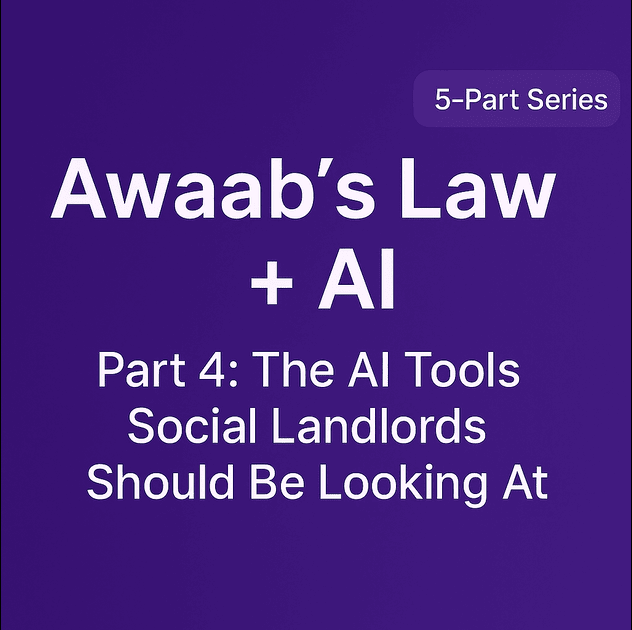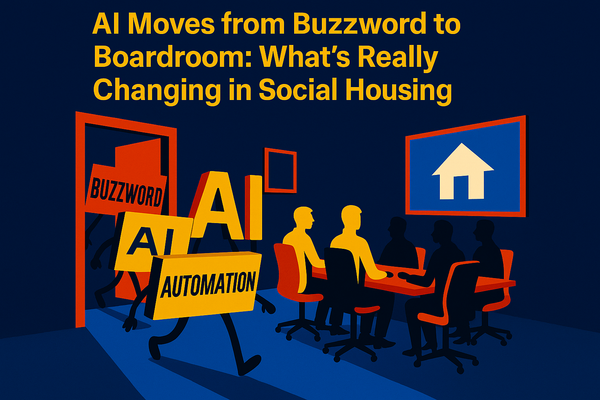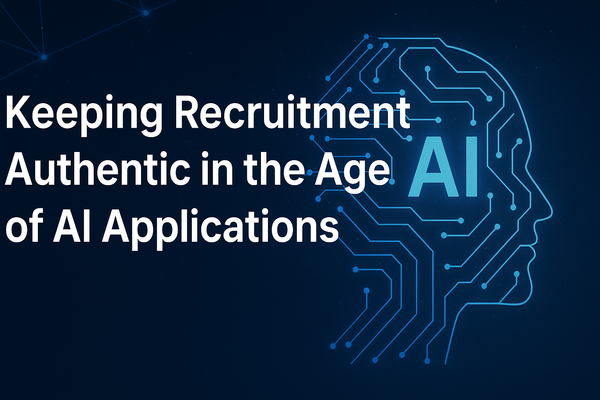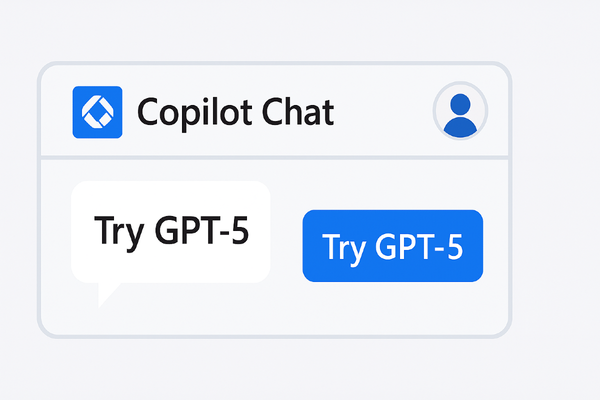🧠 Awaab’s Law Series (4 of 5): The AI Tools Social Landlords Should Be Looking At

What’s practical, what’s overhyped, and how to deploy tools that actually help
By now, most landlords agree: you can’t meet the expectations of Awaab’s Law with reactive systems and fragmented data alone.
But knowing that isn’t always the same as knowing what to do next, especially in the fast-moving world of AI and automation.
So which tools genuinely improve outcomes?
Which are still unproven?
And what’s actually doable right now, rather than sitting in someone’s three-year roadmap?
This blog gives a grounded overview, not just of the technologies available, but how they help tackle some of the sector’s biggest compliance and service challenges. While this isn’t an exhaustive supplier list, we’ve included examples where relevant.
🚨 The Challenge: Awaab’s Law Isn’t Just About Speed
It’s about evidence, proactivity, and tenants not needing to chase.
To meet that standard, landlords need tools that:
- Help identify problems early
- Track and prioritise case risk more intelligently
- Join up comms, inspections, and repairs
- Provide a clear audit trail showing what was done and when
AI can support each of these areas, if it’s applied smartly.
🧰 Tools That Deserve Attention (and Why)
1. AI-Powered Damp & Mould Predictors
AI models trained on property condition data, repairs history, and tenant contact patterns can now predict where mould is likely to occur before it becomes visible.
These tools can:
- Flag at-risk properties
- Inform proactive visits
- Prioritise investment or decarbonisation work
Some combine IoT sensor data with external datasets like weather, ventilation, and occupancy.
🔍 Examples: Switchee, Aico's HomeLINK platform, HACT and Propflo pilots
2. Automated Complaint and Triage Bots
Natural Language Processing (NLP) can scan incoming tenant complaints, spot those related to damp, mould, or leaks, and route them for urgent action.
These systems can:
- Reduce delays from manual triage
- Detect risk words like “mould”, “wet”, or “breathing problems”
- Prompt early interventions
🧠 Note: These work best when trained on sector-specific complaints, not just generic chatbot scripts.
3. AI-Driven Scheduling and First-Time Fix Prediction
Some AI tools optimise trades scheduling using:
- Known property types
- Common failure patterns
- Van stock and technician capability
The goal is to increase first-time fix rates, reduce follow-ons, and make best use of scarce labour.
💡 Example: Some providers now use predictive scheduling to allocate appointments based on likely time-on-task.
4. Visual Recognition for Early Fault Detection
Computer vision tools, essentially AI-trained image scanning, can spot signs of disrepair in photos—such as wall staining, ceiling cracks, or condensation indicators.
Use cases include:
- Surveyor photo uploads
- Tenant-submitted images via apps
- Pre and post-repair image validation
📸 These tools are still emerging in housing but are well established in insurance and facilities management.
5. AI Case Auditing and Pattern Spotting
Instead of auditing 5% of disrepair claims or complaints, AI tools can:
- Scan 100% of case data
- Highlight anomalies or risk factors
- Suggest where human review is needed
This is particularly helpful for Board reporting or regulatory preparation.
⚠️ What to Watch Out For
Not all tools are ready. Some red flags:
- Opaque systems: If you can’t explain how it works, it’ll be hard to stand up in court or to the Ombudsman
- Generic tech: Tools built for other sectors may not align with how tenants interact or how repairs are managed
- Heavy onboarding without early value: If a solution needs 12 months of data cleansing before it delivers, you might miss the moment
🛠️ Deployment Advice: Start with a Clear Use Case
Before buying anything AI-related, ask:
- What problem are we trying to solve?
- What data do we need, and is it in good shape?
- Who needs to use this day-to-day, and are they on board?
- Will it integrate with our current systems or create another silo?
- Can we trial it on a small scale first?
💬 Also: ask the supplier to show how the tool performs in a social housing setting, not just in healthcare or retail.
🤖 Not a Magic Wand, But a Useful Tool
AI won’t fix poor processes. But when layered onto a solid foundation, it can:
- Reduce delays
- Flag risk faster
- Give your teams more time to act
- Help meet the spirit, not just the letter, of Awaab’s Law
Next in the Series
Part 5 of the Awaab’s Law Series will explore:
“Bringing It All Together: What Good Looks Like Across Systems, People and Process”



